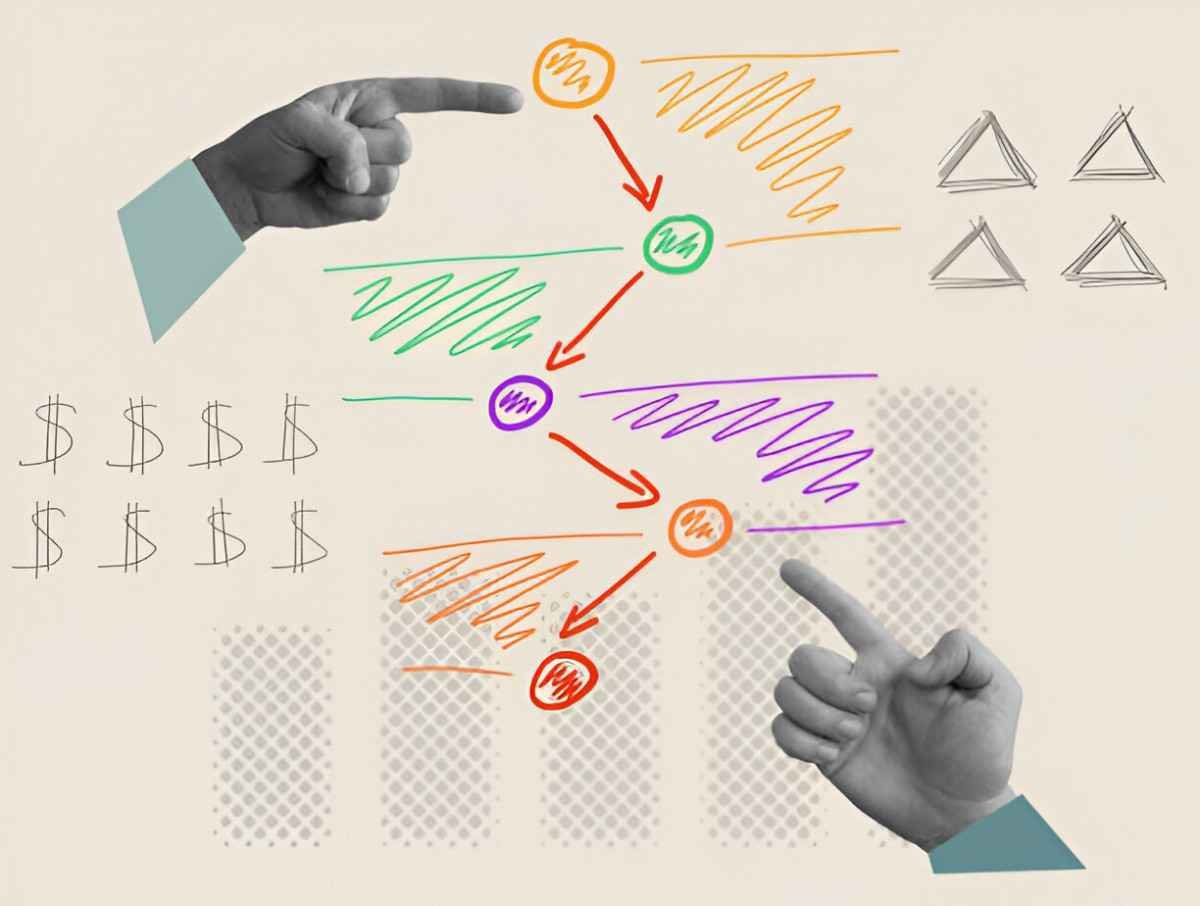As someone deeply immersed in the finance and accounting fields, I’ve always sought tools that simplify complex workflows. One such tool that has consistently proven its worth is the Two-Handed Process Chart. This visual tool is not just a diagram; it’s a powerful method to analyze, optimize, and communicate workflows. In this article, I’ll explore the Two-Handed Process Chart in detail, its applications, and how it can transform the way you approach process improvement.
Table of Contents
What Is a Two-Handed Process Chart?
A Two-Handed Process Chart is a visual representation of a workflow that focuses on the activities of both hands of an operator. It’s particularly useful in tasks that require manual dexterity, such as assembly line work, packaging, or even data entry. The chart breaks down each hand’s movements into specific symbols, making it easier to identify inefficiencies, redundancies, or imbalances in the workflow.
The chart uses standardized symbols to represent different types of actions:
- Operation: A task that adds value to the product or service.
- Transport: Movement of materials or tools.
- Delay: A period of inactivity or waiting.
- Storage: Holding materials or tools for future use.
- Inspection: Checking quality or accuracy.
By mapping these actions for both hands, the chart provides a clear picture of how tasks are performed and where improvements can be made.
Why Use a Two-Handed Process Chart?
In my experience, the Two-Handed Process Chart is invaluable for several reasons:
- Identifying Inefficiencies: It highlights unnecessary movements or delays that slow down productivity.
- Balancing Workloads: It ensures both hands are utilized effectively, reducing fatigue and improving efficiency.
- Standardizing Processes: It creates a visual standard for how tasks should be performed, which is especially useful for training new employees.
- Facilitating Communication: It provides a clear, visual way to discuss workflows with team members or stakeholders.
How to Create a Two-Handed Process Chart
Creating a Two-Handed Process Chart involves several steps. Let me walk you through the process:
Step 1: Define the Task
Start by clearly defining the task you want to analyze. For example, let’s consider a simple task: assembling a small electronic device.
Step 2: Observe the Process
Observe the operator performing the task. Record each action for both hands, noting the type of action (operation, transport, delay, etc.).
Step 3: Use Standard Symbols
Use the standardized symbols to represent each action. Here’s a quick reference:
| Symbol | Action | Description |
|---|---|---|
| ○ | Operation | A value-adding task (e.g., tightening a screw) |
| → | Transport | Moving an item or tool |
| D | Delay | Waiting or inactivity |
| ▽ | Storage | Holding an item for future use |
| □ | Inspection | Checking quality or accuracy |
Step 4: Map the Actions
Create a timeline for each hand, mapping the actions in sequence. For example:
| Left Hand | Right Hand |
|---|---|
| → Pick up screw | → Pick up screwdriver |
| ○ Tighten screw | → Move screwdriver to next screw |
| D Wait | ○ Tighten next screw |
Step 5: Analyze the Chart
Once the chart is complete, analyze it for inefficiencies. Look for delays, unnecessary movements, or imbalances between the hands.
Example: Assembling an Electronic Device
Let’s dive deeper with an example. Suppose we’re analyzing the assembly of a small electronic device. The task involves picking up components, placing them on a circuit board, and securing them with screws.
Observations
- The left hand picks up a component and holds it in place.
- The right hand picks up a screwdriver and tightens the screw.
- There’s a delay while the left hand waits for the right hand to finish tightening.
Two-Handed Process Chart
| Left Hand | Right Hand |
|---|---|
| → Pick up component | → Pick up screwdriver |
| ○ Hold component | ○ Tighten screw |
| D Wait | → Move to next screw |
Analysis
The chart reveals a delay in the left hand’s workflow. To optimize this, we could:
- Redistribute Tasks: Have the left hand assist in positioning the screwdriver.
- Use Tools: Introduce a tool holder to reduce the need for the right hand to move the screwdriver repeatedly.
Mathematical Modeling of Workflow Efficiency
To quantify the efficiency of a workflow, we can use mathematical models. Let’s define efficiency (E) as the ratio of value-adding time (T_v) to total time (T_t):
E = \frac{T_v}{T_t} \times 100\%In our example, suppose the total time for the task is 10 seconds, and the value-adding time (tightening screws) is 4 seconds. The efficiency would be:
E = \frac{4}{10} \times 100\% = 40\%By optimizing the workflow, we aim to increase T_v and reduce T_t, thereby improving E.
Applications in Finance and Accounting
While the Two-Handed Process Chart is often associated with manufacturing, it’s equally applicable in finance and accounting. For example, consider the process of reconciling bank statements:
- Left Hand: Holds the bank statement.
- Right Hand: Enters data into the accounting software.
By mapping this process, we can identify delays (e.g., waiting for software responses) and optimize the workflow (e.g., using keyboard shortcuts).
Comparing Two-Handed Process Charts with Other Tools
The Two-Handed Process Chart is just one of many workflow visualization tools. Let’s compare it with two others:
| Tool | Focus | Best Use Case |
|---|---|---|
| Two-Handed Process Chart | Manual tasks | Tasks requiring hand coordination |
| Flowchart | Overall process flow | High-level process mapping |
| Gantt Chart | Project timelines | Scheduling and tracking project progress |
Each tool has its strengths, but the Two-Handed Process Chart excels in tasks where manual dexterity is critical.
Real-World Case Study
Let’s look at a real-world example. A manufacturing company was experiencing bottlenecks in its assembly line. By using a Two-Handed Process Chart, they identified that operators were spending too much time searching for tools.
Solution
The company introduced tool organizers and repositioned them within easy reach. This simple change reduced the average assembly time by 15%, significantly boosting productivity.
Common Pitfalls to Avoid
While the Two-Handed Process Chart is a powerful tool, it’s not without its challenges. Here are some common pitfalls I’ve encountered:
- Overcomplicating the Chart: Keep it simple. Focus on the key actions that impact efficiency.
- Ignoring Human Factors: Consider the operator’s comfort and ergonomics.
- Failing to Update: Regularly update the chart to reflect process changes.
Conclusion
The Two-Handed Process Chart is a versatile and effective tool for visualizing and optimizing workflows. Whether you’re in manufacturing, finance, or any other field, it can help you identify inefficiencies, balance workloads, and standardize processes. By following the steps outlined in this article, you can create your own Two-Handed Process Charts and unlock new levels of productivity.





